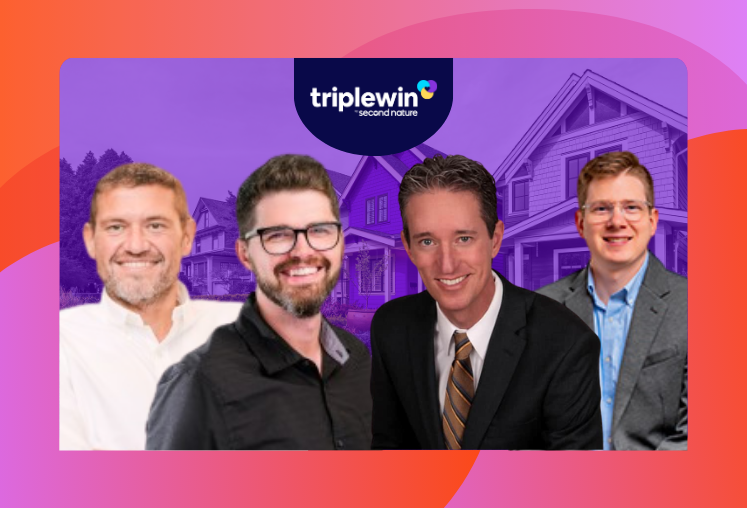How would you say your social media marketing is performing? As a constantly changing medium beholden to trends that can peak and die in a heartbeat, it can be a tough area to win. Truthfully though, it's underused in the property management space.
Content creation for social media doesn't have to be super intense, and it doesn't have to be super polished. It just has to have intent and understanding of who you're marketing to. If you're looking to develop a more robust social media program for your PMC, you're in the right place. Here we break down three companies with three distinct strategies, all of which are unique in the PM space. These companies are crushing it, and learning from their successes can help you develop a strategy that works for you.
Home Ladder's Creative Video Content
Home Ladder’s “Chaos and Disorder” video series is a hit and a great example of creativity that can sometimes be lacking in property management marketing.
Co-founders Travis Bohling and Brandon Graham are among the most creative content marketers in the property management space. While they may be relatively new to the content side of things (Chaos and Disorder is less than a year old), they've hit the ground running with a unique video series that's both relevant and genuinely entertaining in addition to leaning hard into Facebook reels.
Short video content has been trending up in social media marketing since the rise of TikTok, although it's not heavily used in the SFR property management space. Home Ladder has taken this on with sets of short, straight-to-the-point thought-leadership content.
The Chaos and Disorder video series is really fun, though. Home Ladder is starting to spearhead a creative approach to content marketing that the industry could really use more of. The idea here is really to engage the inability of self-managers to be effective tenant screeners, and they've told this story with two destructive characters affably named Chaos and Disorder.
A constant battle in professional property management is trying to keep ahead of the self-managing landlord as self-management tech expands their capacity. Home Ladder is keyed in on that messaging here as a play to position their professional services as more reliable and thorough, and they've done it in a way that's genuinely entertaining and relatable to anyone who has ever had a bad tenant, which is anyone who has ever managed a property.
RL Property Management's Authority Play on Twitter
RL Property Management CEO Peter Lohmann is crushing it on Twitter.
Executives being active in the content creation space can be a big win for companies, and RL Property Management’s Peter Lohmann is a prime example. While this is a popular LinkedIn approach, Lohmann is one of very few who has taken ownership of the property management discussion on Twitter.
A tougher nut to crack than Facebook and LinkedIn, Lohmann has found success and amassed over 21,000 followers via a content strategy that seamlessly blends an authentic connection to the property management space with expertise Lohmann has acquired over years in the industry.
The word relatability gets thrown around a lot when it comes to any kind of content-based marketing, but being relatable isn’t a goal so much as a strategy. The power of relatability is that it establishes trust, a challenging thing to create in many online spaces. If you can establish a familiarity with what affects the people you’re speaking to on a daily basis, that establishes a trust that helps build interest in what you have to say.
Lohmann’s 21K follower count didn’t come purely from expository property management tips. There's a relatability to his content that helps create that trust, which adds value to his thought-leadership content. He’s naturally an authentic person and a master communicator, and while the expertise is valuable, that lies downstream of a personal connection to other industry professionals.
Property management in a nutshell:
— Peter Lohmann (@pslohmann) March 11, 2024
Owners with 40 units: "call me if it burns down"
Owners with 1 duplex: "why did you pay $45 to cut grass? My guy only charges $30 please call me asap"
When Lohmann does get into thought-leadership content, he's an open book, which also helps establish trust. Lohmann, like many leading property managers, believes that propelling the whole industry forward is more important than holding any kind of trade secrets. He does not shy away from granular details of his company, including sharing the what and why of his entire tech stack.
Cheat code for starting & growing a property management business. This is a complete list of our software stack. This is how the magic happens & how we can calmly and effectively manage ~600 units. pic.twitter.com/aTHYAp9MwH
— Peter Lohmann (@pslohmann) December 23, 2021
Grace Property Management's Informative YouTube Series
Marc Cunningham is the YouTube king.
Cunningham has been in property management for over 30 years, and his YouTube strategy is arguably the best in the game. The CEO of Grace Property Management is approaching 5,000 YouTube subscribers.
Part of the value of Cunningham's channel is that you know exactly what you're going to get when you go there. His content is built with a very consistent format and length. He has over 100 videos, almost all of which are between five and ten minutes long, and address a very specific issue or question in single-family property management.
Cunningham's approach is expert-forward, demonstrating that there is more than one way to win in social media and property management marketing. He provides a combination of content that addresses specific questions and issues in the PM space and offers windows into his own operations and the decisions he's made.
His channel's most popular videos, often having thousands of views, cover management topics like how to explain a rent increase to a resident and why you should never charge a pet deposit as well as industry trends like average rent trends and predictions for the coming years.
Because YouTube content is indexed by Google, Cunningham's strategy is built more around capturing search engine traffic than the above two strategies. It's self-sustaining to a degree now because of the size of Cunningham's following, but YouTube is an excellent way to capture search traffic, something Cunningham has leveraged well.



